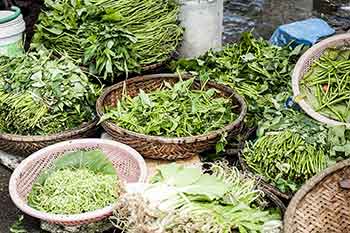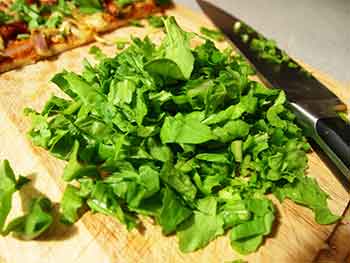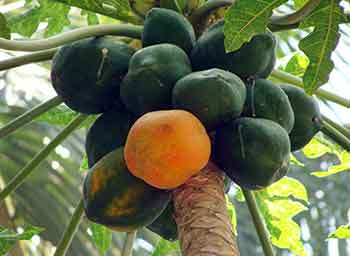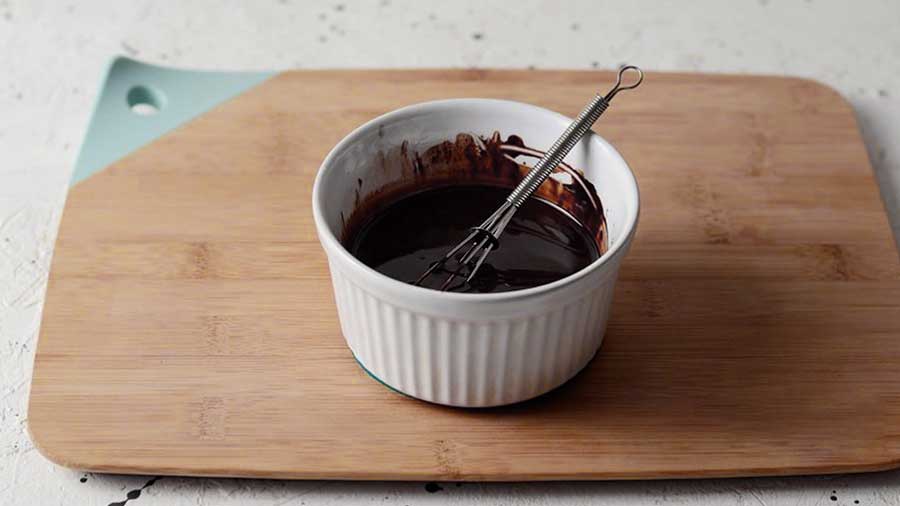Molasses can have plenty of uses in the kitchen. Aside from being an alternative sweetener, it is also being used in baking cookies. In container gardening, molasses can be helpful too. I have heard of some people using molasses as fertilizer for their plants. I tried this once before and, based on my observation, there is really no significant impact as to the overall growth of my potted plants.
Well, maybe it’s because I also use organic fertilizers from time to time, such as carrot and banana peel tea concoction. (Later on in this blog, I will share with you how I make fertilizer out of molasses.)
However, I know well that plants need 3 important nutrients. These are nitrogen, phosphorus, and potassium. Nitrogen is needed in the plant’s vegetative stage. This is the stage where plants vigorously grow leaves and shoots.
Phosphorus is needed for root development while potassium is needed in the flowering or fruiting stage of the plant. I’ve done some research and what I found out is that molasses practically have 0 nitrogen, 0 phosphorus, and some trace amounts of potassium. Not really enough to qualify as fertilizer.
However, molasses is not completely useless in fertilizing plants. Instead of using it directly as a fertilizer, molasses can be used to extract nitrogen, phosphorus, and potassium from other organic materials which will become the fertilizer for our plants. In addition, molasses promotes microbial activity. Good microorganisms enable the plants to resist disease-causing bacteria.
Molasses is an Energy Source for Beneficial Microorganisms
Instead of feeding the beneficial microbes in the soil, I use these beneficial microbes in a different way. I use them to extract nitrogen from green, leafy plants, and potassium from fruits. So basically, I give the microbes a source of energy for them to break down these organic, nutrient-rich materials.
This process happens naturally but it takes a much longer time. Feeding them with molasses just makes it faster. The process of extracting the nutritional properties of the organic material that we are using is sometimes called fermentation. Plants rich in nitrogen include beans, peas, nuts, spinach, and other leafy vegetables.

You can even use fresh lawn clippings. If you can’t get your hands on these plants, you can use just about any grass, weed, or shrub. Aside from nitrogen, they are also rich in growth hormones. These hormones are great for cell growth and cell expansion.
Brown Sugar is a Substitute for Molasses
In case you can’t find molasses in your kitchen or your locality, you may use brown sugar instead. To put it simply, brown sugar is just white sugar mixed with molasses. Don’t use white sugar.
White sugar is already processed or refined, wherein molasses has been removed already. When brown sugar melts, you have molasses.
Using Molasses to Make a Plant Fertilizer
As mentioned above, we extract the nitrogen from the plants through fermentation. There are different ways of doing the fermentation process, but the main procedure is just the same. Mix the nutrient-rich materials with molasses, cover, and store in a cool, dry place. They just differ in some minor details.
Let me share with you how I make it. I like to call this as Fermented Plant Juice or FPJ. But before you start, make sure that all tools or equipment you are using are clean and sanitized. This is to prevent contaminants or bad bacteria from fouling your mixture.
Step 1:
Gather all nitrogen-rich plants that you can get. Slice them into small pieces and put them in a large bowl. You may chop them, or ground them using a mortar and pestle. The smaller they get, the faster will be the fermentation process.

It also helps that when you slice it, their plant juices will ooze out, which will then mix with the molasses. I like to use fresh spinach, potato, and sugar snap pea leaves. I also like to include fresh grass clippings from my backyard.
Step 2:
Add the molasses into your chopped plants and mix them together with a spoon or a spatula. Mix for about 5 minutes. However, to speed up the process, you can use a blender. Place the chopped leaves in the blender. Add in the molasses.
The ratio is 1:2. For 1 every part of molasses, use 2 parts of organic material. If you have 200 grams of organic materials, you need to add 100 grams of molasses. Blend until you get a smooth texture.
Again, if you don’t have molasses, you can use brown sugar instead. The juice or the moisture from the plant material will mix with the brown sugar, producing a “syrupy” texture.
Step 3:
Transfer the mixture to a clean container that can be closed with a lid. I am using a plastic soda bottle for this. It may be better to use a wide-mouthed container so you can mix it easily.
Seal the container with a lid, but make sure not to seal it tightly. The fermentation process will produce gases. Pressure will build up inside the container if the gases cannot escape. This might cause the container to explode.
To make sure this won’t happen, open the container daily to let the gases out and at the same time, mix the concoction with a clean spoon or spatula. Alternatively, you don't have to close the lid tightly. Give it some slack just enough to let the accumulated gases out, while making sure that insects can't get inside the container.
Step 4:
Wait until the fermentation process is complete. The fermented plant juice concoction is ready to use after 1 week. However, some materials may not be completely broken down yet. When the beneficial microbes breakdown the organic matter, it turns it into liquid.
It is better to give it more time to break down. In my case, I like to wait for a month before I use it. But 3 weeks is also ok, especially if the materials are finely chopped.
The ideal scenario is when all the materials are completely liquefied. All the plant materials, such as the leaves and stems are completely dissolved.
The liquefied plant fertilizer is sometimes called fermented plant juice.
Harvesting the Fermented Plant Juice (FPJ)
Once you are ready to harvest the fermented plant juice, check first if the entire procedure was successful. The best way to check if the concoction is a success is by smelling it. When you open the container, it doesn’t have that foul, rancid smell. The smell should be comparable to that of a natural tea.
It has that sweet and herbal smell.
To harvest your fermented plant juice, simply filter out the remaining solid particles. You may use a cloth or a strainer and transfer all the liquid to a clean container. The remaining solid particles can be added to your compost.
If you don’t have one, simply sprinkle them on the soil around the plant. This process is called topdressing. Because molasses is a natural preservative, you can use this fertilizer for up to a year. Just make sure to keep it in a clean container to avoid contaminants.
Also, remember that the fermentation process may still be ongoing. Don’t try to close the lid tightly because the microbes may still be releasing gasses which could build up pressure inside the container.
It is good to open the lid maybe twice a week. Always store it in a cool, dry place. I just keep it under the sink.
Molasses-based Fermented Plant Juice is a Good Foliar Fertilizer
The best way to apply the fermented plant juice to your plants is to use it as a foliar fertilizer. Foliar feeding is when the fertilizer is applied directly to the leaves of a plant, usually through spraying. With foliar feeding, the nutrients are absorbed directly through the leaves of the plant. The leaves absorb the nutrients through the stomata.
It is best to spray the fertilizer in the early morning or late afternoon. This is when the plant’s stomata are open. To use it as a spray, you need to dilute it first in water.
The proper ratio is 10 ml of fermented plant juice per 1 liter of water. This is roughly 2 tablespoons per liter of water. Mix thoroughly before spraying. Spray twice a week. The fermented plant fertilizer is rich in nitrogen so it is best to use it in the vegetative stage of the plants, or the stage when it is focused on producing leaves. In the flowering and fruiting stage, it is best to use fermented fruit juice (FFJ).
Molasses-based Fermented Fruit Juice (FPJ) is Good for the Flowering and Fruiting Stage
When your tomatoes, peppers, squash, cucumbers, or any other fruiting plant starts producing flowers, you need to supply it with potassium. At this stage, you can stop applying the fermented plant juice. Instead, you need to switch to a potassium-rich fertilizer.
To make a potassium-rich fermented plant juice, simply follow the steps in making a fermented plant juice. However, instead of using plants rich in nitrogen, use fruits instead. Fruits that are high in potassium include papaya, cucumber, banana, and squash.

When mixing, the ratio of fruits to molasses is 1:1. Make sure to remove the seeds before mixing.
Fermenting nitrogen-rich plants and potassium-rich fruits using molasses will take time. The process could last for up to a month, although results could already be seen by the first week. So if you intend to make one, you have to make it ahead of time.
Start making one probably after sowing the seeds. By the time they are ready to be transplanted, your fermented plant juice will be ready.










